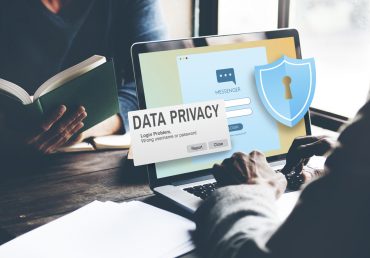
As companies aim to become data-driven, data cleansing becomes a crucial part of an organization’s business intelligence strategy.
According to the 1-10-100 quality principle mentioned by Validity, the relative cost of fixing a data quality problem increases exponentially over time. It takes $1 for identifying bad data at the earliest stage, $10 for correcting existing problems at the middle stage, and $100 for fixing a problem after it causes a failure at a later stage. As companies aim to become data-driven, bad and dirty data continues to be the biggest obstacle in their execution. This is why data cleansing is the most crucial part of an organization’s business intelligence strategy.
See also: DataOps: The Antidote for Congested Data Pipelines
What is data cleansing?
Data cleansing is a broad term that is used to refer to the process of standardizing and transforming data to make it useful for various purposes. Generally, data cleansing involves:
- Update inaccurate data to reflect reality
- Validate data using correct data types and formats
- Fill incomplete or blank values
- Deduplicate data to represent single entities
- Merge data from different sources to create a single source of truth
When data is captured through various applications, it is stored with a lot of messy mistakes and damaging errors. This is where data cleansing practices and techniques can help you to ensure data quality so that it can be used for its intended purpose.
Measure data cleanliness to ensure data quality
To measure how clean your data is, you need to check it against the following six dimensions:
- Accuracy: How well does your data depict reality?
- Completeness: Does your data contain the required attributes?
- Consistency: Do disparate data sources have the same matching records?
- Validity: Does your data exist in the right format, data type, and within acceptable range?
- Timeliness: Is your data acceptably up to date?
- Uniqueness: Is your data free of duplicate records?
A dataset that follows these six data quality principles is considered to be clean and ready for its intended use.
Data cleansing workflow
To conform data to the six quality dimensions mentioned above, it must go through a series of following stages:
- Data profiling: Generate data profiles to highlight any misspelled, missing, invalid, or duplicated values in your dataset, and indicate possible data cleaning opportunities.
- Data standardization: Use the data profile generated above, and transform data values so that they represent accurate, valid, and complete dataset attributes.
- Data matching: Identify multiple instances of the same entity by implementing robust, proprietary data matching algorithms for phonetic, numeric, domain-specific, and fuzzy matching scenarios.
- Data deduplication: With the calculated data match results, decide which records should be eliminated or merged together to build a single source of truth.
Data cleansing activities
A number of data cleansing activities take place during the implementation of the workflow mentioned above. Some of these activities are:
- Generating histograms against your datasets to see the volume of different values within a column.
- Replacing incomplete or invalid values with accurate representations, patterns, and data formats.
- Running data values across a library or dictionary of words such as first names, last names, or addresses, and identifying the components which are necessary to keep and the ones that need to be eliminated.
- Identifying patterns in data to make sure all values within an attribute follow the same pattern. This can involve identifying common patterns like email addresses and phone numbers or using a regular expression logic builder to define proprietary patterns.
- Parsing data attributes into multiple columns or merging various fields together to make the dataset more meaningful or useful for an intended purpose.
- Implementing data matching algorithms that are tuned to ensure maximum match accuracy and the least number of false positives.
- Based on the matched results, building transformational logic that decides which records to merge or purge to attain the golden record.
Best practices to maintain data cleanliness
Let’s look at some of the practices that can help your organization to keep their data clean and standardized, as well as reduce time lost in data inspection and cleansing.
Put validation checks on data entry: In the digital age, mostly data is captured through front-end forms. Putting validation controls on these forms can save you a lot of time and effort spent in screening and correcting errors. This involves restricting data input with specific controls; for example, date type fields should prompt the user to input date using a calendar only. Similarly, there should be validation checks on value patterns as well; if only work email addresses are allowed, then the field should be blacklisted for other free mail domains, and so on.
Use automated data quality tools: There are many data quality management tools in the market, but very few will actually offer an end-to-end solution at an affordable price. An automated software tool will eliminate the effort that goes into screening millions of data records manually and building standardized cleaning logic that will work with any dataset.
Get buy-in from management: An organization’s management is mostly aware of the importance of data for business intelligence, but there is a disconnect where they need to understand the significance of clean data for deriving accurate, meaningful insights. It is important for data analysts to relate business objectives to data cleaning activities, so that they can get buy-in from management. Since data is involved in every business process, a collective effort from each employee in maintaining data cleanliness is crucial.
Construct a glossary of data and its meta data: Data is generated, stored, and processed for various purposes at your company. This is why it is necessary for everyone to have a single, standardized definition of all data-related terms. This will help your employees to understand why certain data is being captured, the acceptable data type, format, and range for these data values, where it is used, and so on.
Define and monitor data quality indicators: Establish a data quality framework that identifies all roles impacting data quality at your business, screens data for detecting quality issues, and reports important metrics such as data consistency, validity, and completeness. These indicators will help you to track data in your organization and ensure that upcoming data conforms to your organizational requirements.
Importance for businesses
There are many areas where data cleansing plays a critical role. They include:
Complying with data standards: With strict data protection regulations being enforced, such as GDPR, HIPAA, and CCPA, it is highly necessary to have your data conform to these requirements. If you have clean, standardized, and deduplicated data records, only then will you be able to follow through the requests of hiding, updating, or erasing personally identifiable information as needed.
Enhancing customer experience: Data has always powered personalization and helped build a positive customer experience. If your data is not up to date or contains duplicate customer records, you can end up sending the same promotional material twice to a customer. Such happenings can badly impact your relationship with customers as they may feel they cannot trust your organizational data.
Facilitating operational efficiency: A good data quality plan helps organizations to effectively utilize technology, workforce, and resources, and plan better business processes. It saves you a lot of time and gives your teams an opportunity to focus on execution, profit margins, and higher objectives that will be derived by clean and standardized data.
Influencing marketing and sales operations: Marketing and sales teams deal with an organization’s data the most. Whether it is being used for running email campaigns, advertisements, or social media campaigns, data is always at the core of all these processes. Having a dataset that your marketing teams can trust blindly is crucial for your business. And when it comes to sales, how many times does it happen that the same sale was recorded multiple times, giving executives skewed reports and insights. This is where having clean and standardized data will have a huge impact on your overall business efficiency.



























